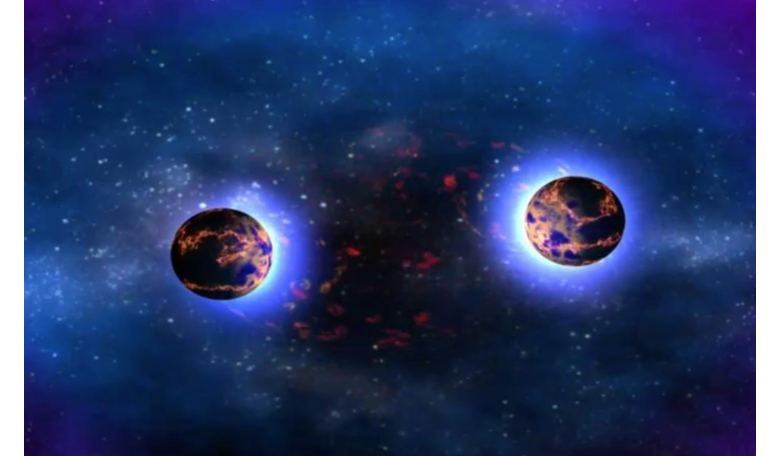Measurements of newly born neutron stars indicate that these ultra-compact objects get a significant velocity kick at birth, that disrupts any close by companion, while subsequently giving rise to a new type of promptly appearing eLISA gravitational wave (GW) source, say researchers.
Neutron stars are created when stars with an initial mass of eight solar masses or more undergo core collapse. During this process protons and neutrons essentially melt into each other to form neutrons and the energy involved in such a process results in a supernova explosion.
Some neutron stars turn into rapidly rotating stars that emit regular pulses of radio waves (and other types of electromagnetic radiation) at rates of up to one thousand pulses per second. These are known as pulsars and studies of pulsars show that newly born neutron stars receive a large natal kick reaching up to ∼ 1, 500 kilometres per second. The exact mechanisms responsible for this kick are still debated but it thought to be the result of an asymmetric explosion of the supernova.
Over 80% of observed massive O and B stars are found in binaries or multiple star systems and it is therefore expected that a large fraction of all neutron stars will go through a post-supernova interaction between the newly born neutron star and its companion.
Now, a team of astronomers at the Israel Institute of Technology, Haifa, have studied what happens to these stars and their companions when the neutron star receives a natal kick and perhaps to be expected, the results show that in some cases, the natal kick is a catalyst for destruction. Calculations show that the force of the kick may fling the neutron star into such a trajectory that it disrupts or collides with a binary companion, or that it could be tidally-captured into a close orbit, eventually forming an X-ray binary.
Nonetheless, in other cases, the kick could also produce black hole - neutron star (BH-NS) binaries with very short merger times. This could possibly give rise to a new type of gravitational wave (GW) source that is detectable with eLISA. eLISA will be the first observatory in space to explore the gravitational Universe and it is sensitive to GW sources from binaries at large separations.
The team also state that the formation of NS-BH binaries could also produce gravitational wave emission that could be detected with aLIGO and that these sources could additionally produce a unique supernova electromagnetic counterpart which precedes the GW merger. aLIGO is short for the advanced Laser Interferometer Gravitational-wave Observatory (aLIGO), which aided in the discovery of gravitational waves late last year.
For more information on this research, see; https://arxiv.org/pdf/1610.00593.pdf











